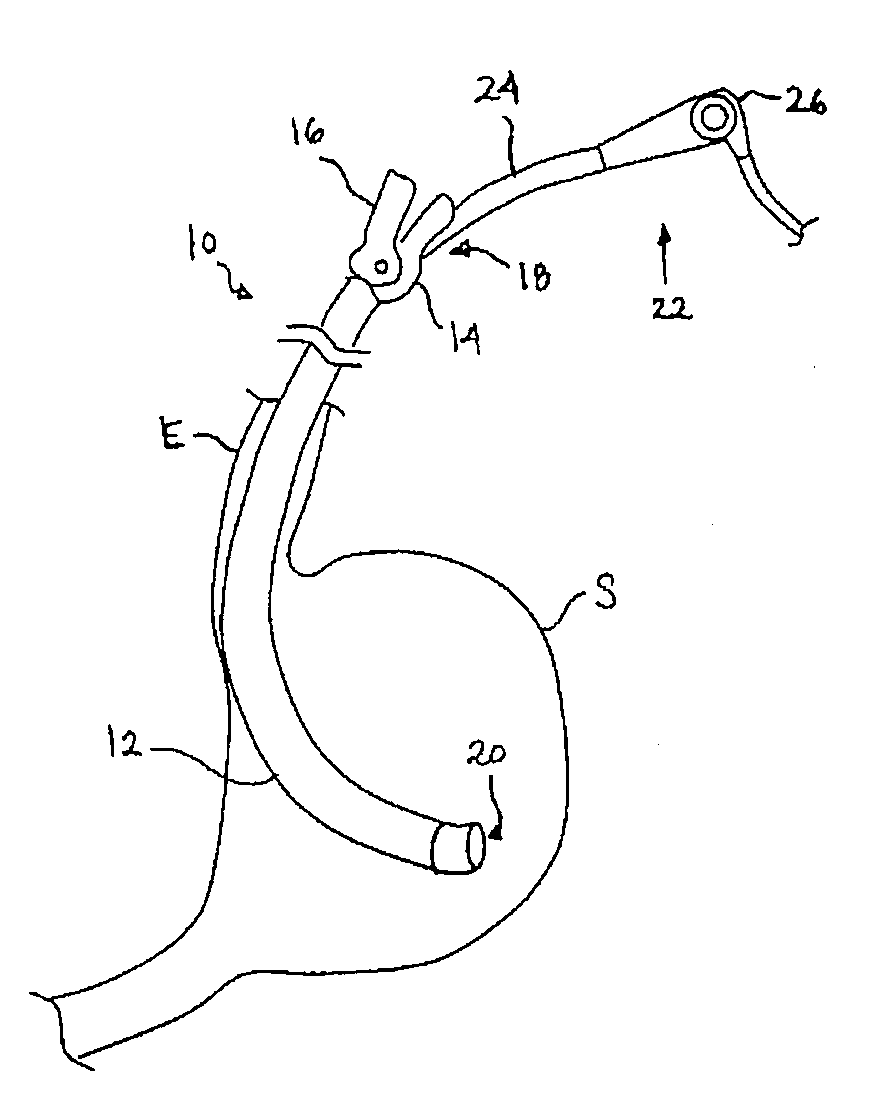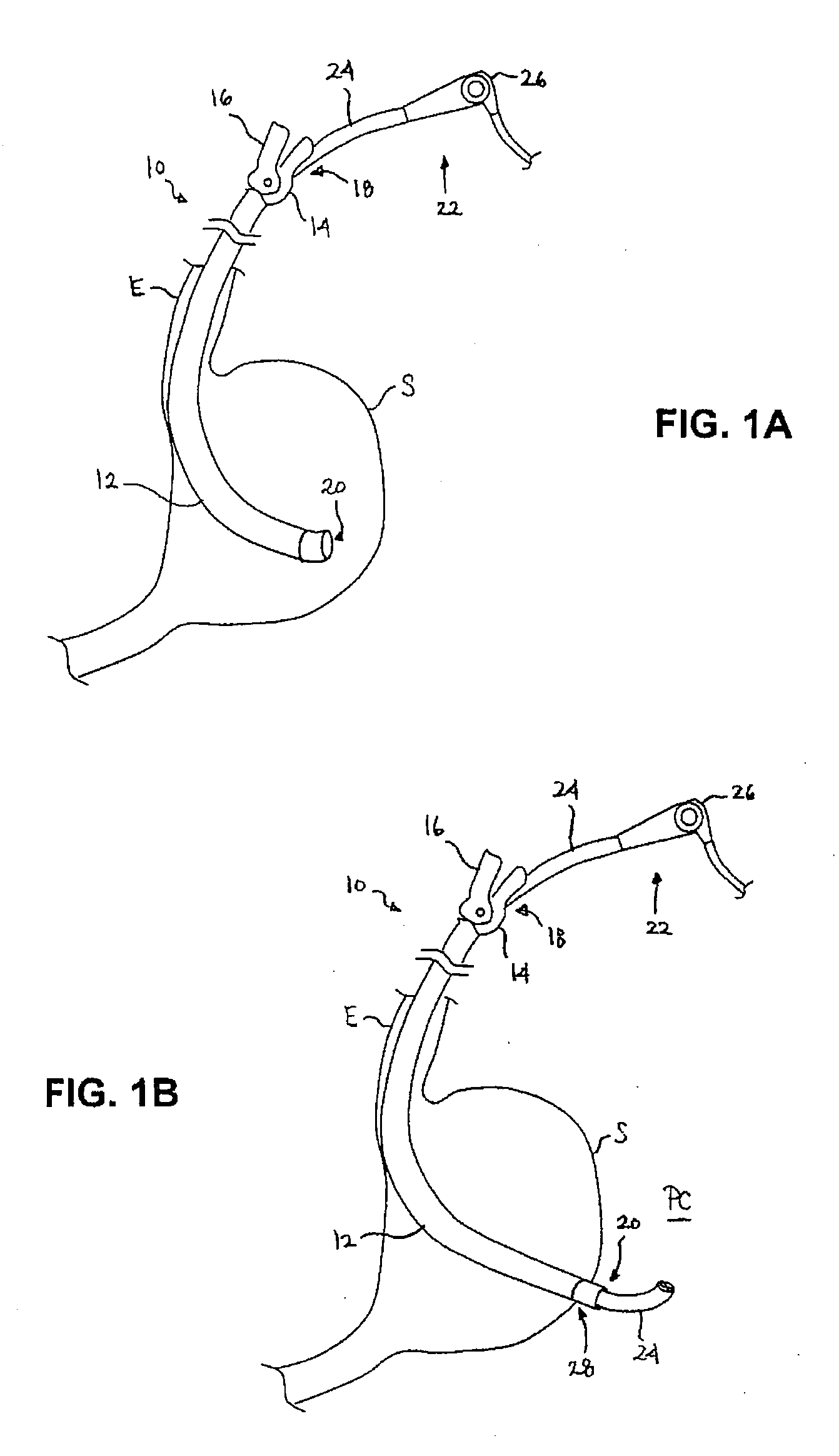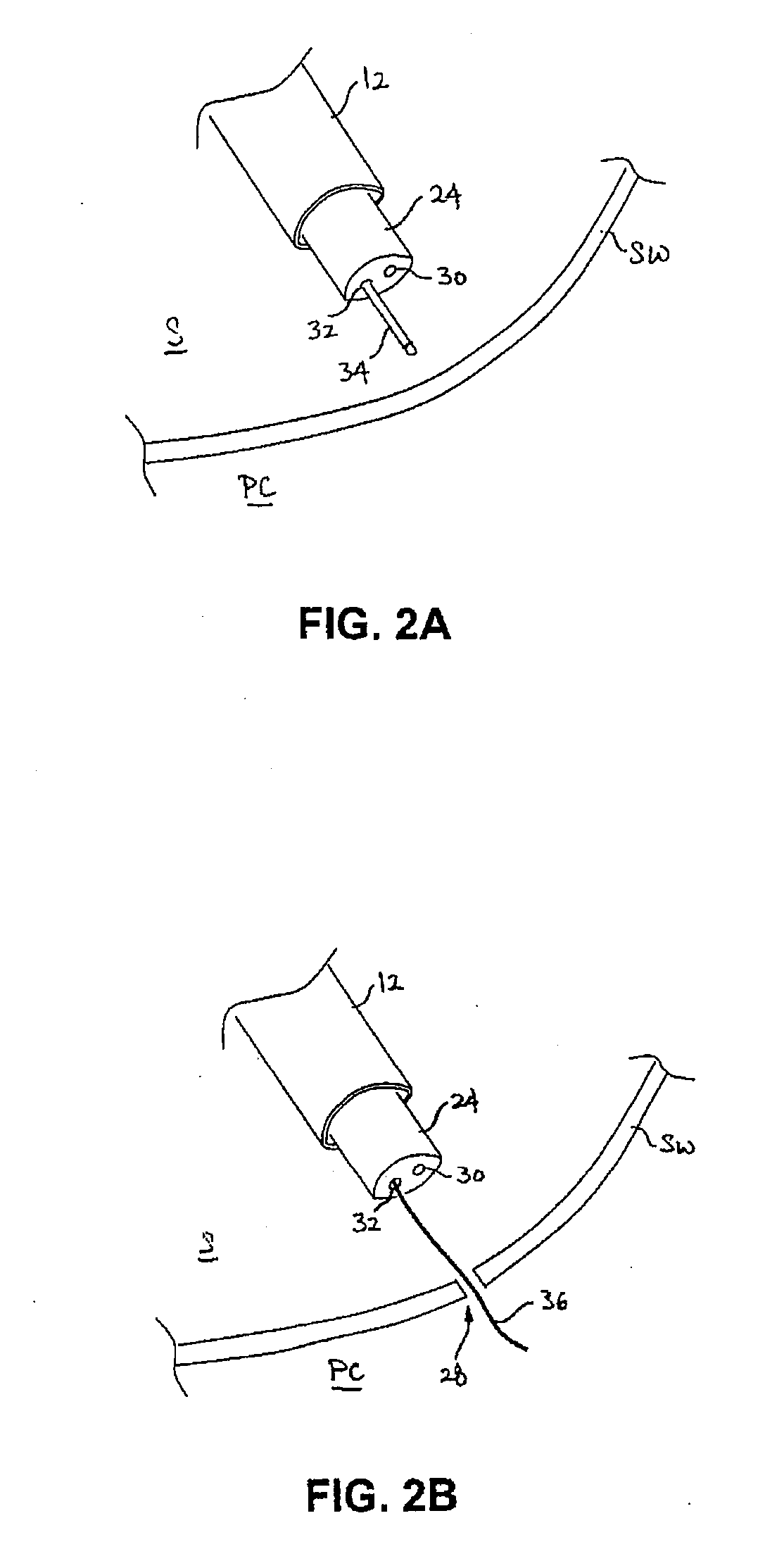Instrument assisted abdominal access
a technology of instruments and abdominal cavity, applied in the field of instruments and methods for transluminal access into the patient body, can solve the problems of difficult relocating of the opening for closure, inability to insufflate the stomach, so as to achieve the effect of easy locating the opening position
- Summary
- Abstract
- Description
- Claims
- Application Information
AI Technical Summary
Benefits of technology
Problems solved by technology
Method used
Image
Examples
Embodiment Construction
[0052] The present invention relates to apparatus and methods for endoluminal, transluminal procedures, including per-oral, transgastric and / or per-anal, transcolonic procedures. Access to regions within the body may be effected through a per-oral and transgastric approach where access to regions within a patient body, i.e., regions which are normally accessible through open or laparoscopic surgical procedures, may be accomplished through endoluminal methods and devices delivered endoluminally. For instance, access to a patient's peritoneal cavity may be accomplished entirely through endoluminal methods and devices via passage through an opening made in the stomach wall. Alternatively, endoluminal access may also be facilitated through a number of combined endoluminal and laparoscopic procedures. Various endoluminal and trans-abdominal access methods and devices are shown in further detail in U.S. patent application Ser. No. 11 / 238,279, filed Sep. 28, 2005, which is incorporated her...
PUM
 Login to View More
Login to View More Abstract
Description
Claims
Application Information
 Login to View More
Login to View More - R&D
- Intellectual Property
- Life Sciences
- Materials
- Tech Scout
- Unparalleled Data Quality
- Higher Quality Content
- 60% Fewer Hallucinations
Browse by: Latest US Patents, China's latest patents, Technical Efficacy Thesaurus, Application Domain, Technology Topic, Popular Technical Reports.
© 2025 PatSnap. All rights reserved.Legal|Privacy policy|Modern Slavery Act Transparency Statement|Sitemap|About US| Contact US: help@patsnap.com



